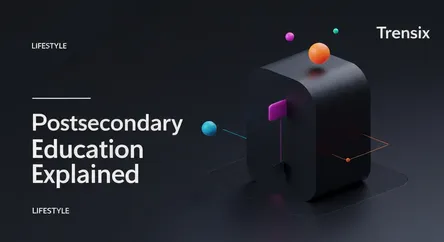Lifestyle
Postsecondary Education Explained

Discover postsecondary education: the next level of learning after high school. Explore colleges, universities, and vocational schools shaping futures.
What is it?
Postsecondary education, often called higher education, refers to any formal learning pursued after completing secondary school (high school). This broad category includes a wide range of institutions, from traditional four-year universities and two-year community colleges to specialized vocational, technical, and trade schools. It encompasses everything from associate and bachelor's degrees to master's, doctoral, and professional qualifications. The goal is to provide students with advanced knowledge and specialized skills for specific career paths or further academic study, moving beyond the foundational learning of K-12 education.
Why is it trending?
The demand for postsecondary education is consistently high due to the evolving global economy. Many modern careers require specialized skills that are best acquired through higher learning, and it is often seen as a direct pathway to better job opportunities and higher lifetime earnings. Furthermore, the rise of flexible online and hybrid learning models has made advanced education more accessible to a wider audience, including working adults. Governments and industries also promote it to foster an innovative and competitive workforce, keeping the topic relevant in public discourse.
How does it affect people?
Pursuing postsecondary education significantly impacts individuals' lives. It generally leads to increased earning potential and lower unemployment rates. Beyond finances, it fosters critical thinking, problem-solving skills, and personal growth. However, the high cost can lead to substantial student loan debt, creating financial stress for many graduates. It also influences social mobility, offering pathways to new opportunities, but access and affordability remain significant equity challenges. For society, a highly educated populace drives economic growth, innovation, and civic engagement, making it a cornerstone of modern development.